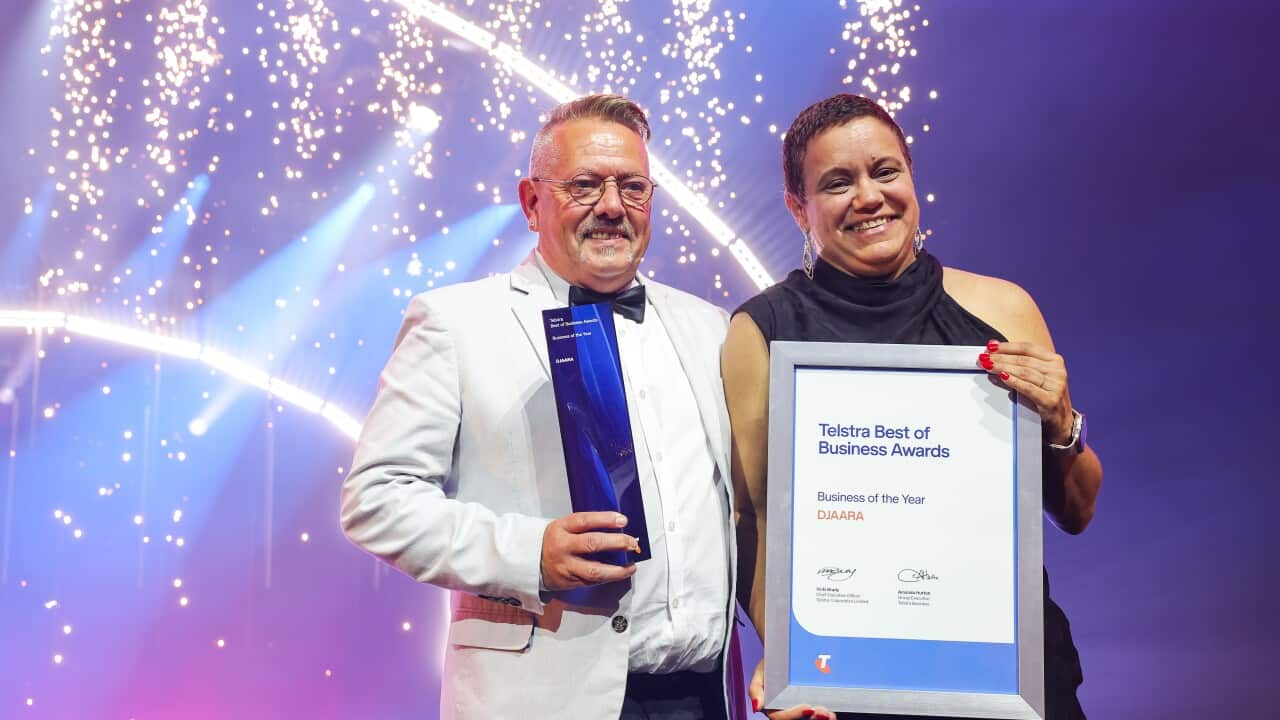Businesses owned and operated by Aboriginal and Torres Strait Islander peoples are being showcased in India this week, as part of a growing push to strengthen ties between Indigenous communities and one of the world’s fastest-growing economies.
The initiative follows the Australia–India Economic Cooperation and Trade Agreement, signed in 2022, which aims to expand opportunities for Indigenous participation in international trade.
Among the highlights is the fashion label Kirrikin, which made its debut at a catwalk show in New Delhi overnight, in collaboration with the Fashion Design Council of India.
The label’s luxury garments feature artworks created by First Nations artists, digitally printed onto fabrics made in India.
Kirrikin founder Amanda Healy, a proud Wonnarua woman from the Hunter Valley in New South Wales, said the brand grew from her frustration at the lack of authentic Aboriginal representation in Australian fashion.
“At the time, nothing authentically represented Aboriginal people,” she said.
“There was no return to community, no acknowledgement of who we are. I complained about that for a few years - and then decided to do it myself.”
Healy, who spent much of her life in Western Australia and had already established a successful engineering business, launched Kirrikin in 2014 with four artists.
The label now operates as a social enterprise, returning all profits directly to the artists whose work features on its designs.
“Our artists often get the rough end of the pineapple - they’re not paid fairly for their incredible work,” she said.
“With Kirrikin, we wanted to change that.”
The brand’s latest collection, Evoke, celebrates a decade of collaboration, colour and storytelling.
It combines artworks from First Nations women with Indian-made silks and cashmeres, reflecting what Healy describes as a natural partnership between two cultures with deep artistic traditions.
“The sheer range of fabrics here in India is incredible - the inventiveness, the recycling, the craftsmanship,” Healy said.
“As I’ve learned more about Indian culture, I’ve seen how similar we are. We’ve both faced the impacts of colonisation, and both continue to celebrate our connection to culture, country and community.”
She said India’s long textile history makes it a perfect fit for collaboration with First Nations artists.
“There’s a real interest in sharing knowledge and stories,” she said.
“We clearly have shared DNA in this part of the world. You can even see it in the faces of people in southern India - there’s a kinship there.
"I think there’s an opportunity to put our prints on Indian clothing and to learn from each other. Watch this space.”
While Kirrikin brought culture and creativity to the runway, other First Nations enterprises are in India to build commercial and industrial partnerships.
Also visiting this week is the first-ever First Nations Business Mission to India, which includes leaders from eight Indigenous-owned companies in the mining, energy and renewables sectors.
The delegation aims to forge links with major Indian firms and government bodies, strengthening ties in trade, innovation and sustainability.
Bidjara, Ghangulu and Iman woman Liza Fraser-Gooda, co-founder of SafeSpear, said the trip represents a major opportunity for Aboriginal businesses to step onto the international stage.
“It’s about how we can collaborate and share knowledge - opening trade opportunities and building partnerships that not only grow our businesses, but also create training and employment for our people,” she said.
Fraser-Gooda, whose company provides safety inspection services and products for oil, gas and defence industries, said SafeSpear is driven by a simple principle: ensuring every worker who goes to work comes home safely.
She said the mission’s busy agenda - which includes meetings with the Australian High Commission, the Consul-General, and major Indian corporations like Tata and Tata Power - is about building long-term relationships.
“We’ve been traders and innovators for more than 65,000 years,” she said.
“Now it’s about bringing two ancient cultures together - both rich, community-driven and resilient - to share skills and open new trade opportunities.”
The business mission will conclude in Kolkata, where delegates will attend India’s largest mining conference - the International Mining, Equipment and Minerals Exhibition.
Fraser-Gooda said the visit marks the start of something bigger.
“This is just the beginning,” she said. “We want to show that Aboriginal businesses can operate on the world stage - leading with innovation, integrity and culture.”
Share






